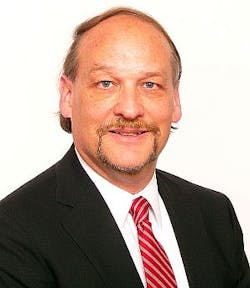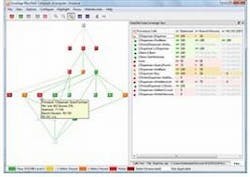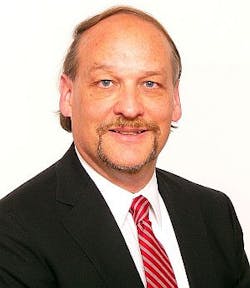Methodology and certification roadmap key to standards compliance, addressing goals of regulatory authorities, says LDRA’s StClair
BIO:
· NAME: Bill StClair
· TITLE: Director of U.S. Operations and LDRA Certification Services Director of Sales and Marketing
· CO.: LDRA
· ROLE: Provider of standards compliance, automated software verification, source code analysis, and test tools
· CONTACT: www.ldra.com
An avionics regulations and certification expert from LDRA describes the FAA National Systems, Software and Airborne Electronic Hardware conference, which the company is co-sponsoring, and the path to certification.
Please describe the upcoming FAA event.
The National Systems, Software, and Airborne Electronic Hardware Conference has provided an excellent opportunity for FAA guidance to be provided to the community of Designated Engineering Representatives (DERs), who serve as auditors in the certification process. In fact, this is the only event where all of these groups get together to discuss best practices, enforcement, and oversight.
Why are aerospace events, such as this and other high-tech conferences, so valuable – especially now?
The last time the FAA brought all DERs together was in 2011 and, since that time, there have been many new standards issues--DO-178C, DO-330, DO-331, DO-332, DO-333. The conference brings the FAA, DERs, and industry together and serves as an excellent venue for learning about and discussing the new guidance.
What changes are on the horizon and/or happening now with which engineers and executives need to keep pace?
This will give companies a chance to learn all about the new standards and to discuss how these changes affect the processes they have.
What role does software play in these changes?
The conference includes systems, software, and electronic hardware. The biggest changes were in the software standards. In addition to adopting safe guidance for modern development methodology such as modeling and formal methods, several loop holes in the old certification standards were clarified to improve best practices and to ensure consistency from the regulatory perspective. As well, ARP 4754A is the new systems guidance that has come into effect, and this is the first time that systems has joined into the conference.
The FAA approached industry to sponsor this event. Do you foresee the FAA going the way of NASA, and collaborating and partnering more with commercial vendors to gain access to commercial resources, help with budgets/funds, etc.?
Absolutely. It makes sense. And, LDRA and Logicircuit have stepped up to the plate in ensuring through this sponsorship that industry has the chance to meet with the FAA and DERs to discuss these new standards. LDRA is committed to helping industry continue to improve software quality and provide high assurance software. Sponsorship of this event helps the entire avionics industry move forward with improved software quality.
What value does government and industry collaboration bring?
It’s all about partnership. The FAA delegates authority to Designated Engineering Representatives (DERs), who are members of private industry to perform oversight tasks. This is a mutually dependent relationship between the two.
Why have you opted to sponsor the event?
We are heavily involved with the development of these standards such as DO-178C with executive leadership in the DO-178C committee. In addition to our software quality focus and our verification tools, our LDRA Compliance Management System is the only complete solution helping customers ensure DO-178C compliance. This system offers fully compliant plans, standards and other lifecycle documents, process checklists, and a problem reporting system to help customers manage certification planning, development, verification, and regulatory activities. Given our strong position in this industry, it just made sense for us as industry leaders to be involved and show our support.
What can attendees expect from your firm at the event?
Mike Hennell, the founder of LDRA, will talk about how LDRA has been instrumental in DO-178B verification and how we have evolved into a leadership role for methodology development for DO-178C compliance. We will also provide an in-depth session on coding rules to meet DO-178C objectives and a session on data and control coupling support that also presents our unique support for object code verification.
Do you have any advice or guidance related to regulations, requirements, or policies that should be implemented today and into the foreseeable future?
For us, we’re more concerned with providing a methodology to prove compliance with the standard. We’re not a regulator. We want to help our customers with the certification roadmap to address the goals of the regulatory authorities.
This collection of standards requires in-depth understanding and full compliance. The National Systems, Software, and Airborne Electronic Hardware Conference offers DERs and the industry the opportunity to improve their understanding so that they can go home and implement improved practices into their process. LDRA is here to help them with that process—by sponsoring the event, by developing tools that help verify software and prove compliance, by offering full certification services that help companies contain the cost of compliance management.
Bill St. Clair is currently Director, US Operations for LDRA Technology and LDRA Certification Services in San Bruno, California and has more than 25 years in embedded software development and management. He has worked in the avionics, defense, space, communications, industrial controls, and commercial industries as a developer, verification engineer, manager, and company founder. He holds a U.S. patent for a portable storage system and is inventor of a patent-pending embedded requirements verification system. Bill’s leadership was instrumental in adapting requirements traceability into LDRA’s verification process.




